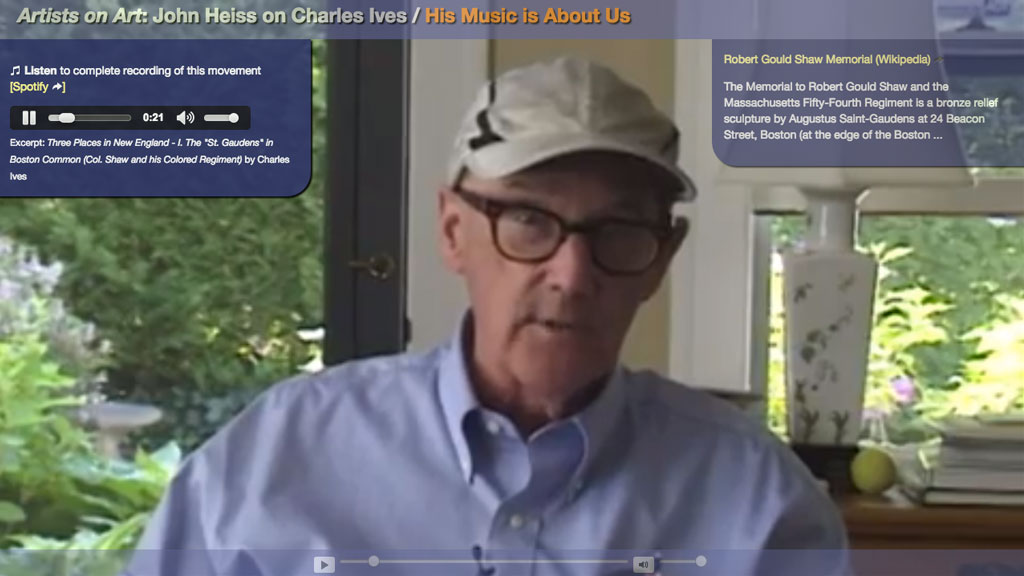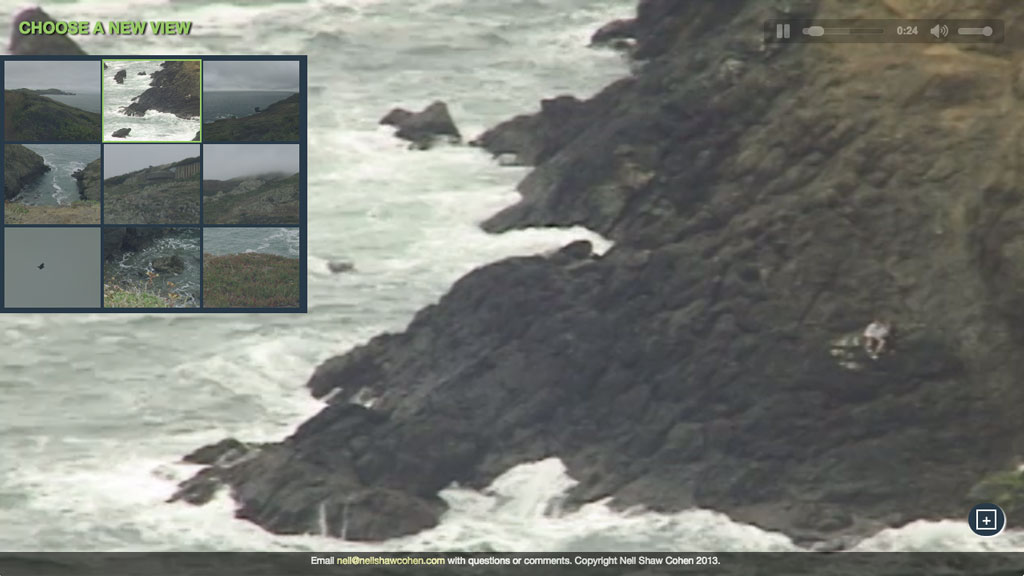John Heiss on Charles Ives and The Marin Headlands in Fog are experiments in non-linear, interactive video for the web.
➜ View John Heiss on Charles Ives
➜ View The Marin Headlands in Fog
What I Did:
Web & Mobile Design
Media Production
Music Composition
Launched in Spring 2013
Background
John Heiss on Charles Ives and The Marin Headlands in Fog are two seperate projects, but they were developed at the same time and offer alternative approaches and answers to questions I was investigating at the time:
What are some of the ways I could move beyond "flat" web video to create immersive, multi-faceted experiences in the browser?
Which affordances of interactive video would enable me to design for stronger engagement and richer aesthetic experiences?
How could I utilize browser-based technology to seamlessly integrate audio and video elements while freeing them from the linearity of a conventional video with a fixed score?
The resulting projects are essentially "proofs of concepts," experiments in blurring the lines between video, website, and multimedia installation.
John Heiss on Charles Ives
This short interactive documentary explores the work of early 20th century American composer Charles Ives through the eyes of John Heiss: a composer, musician, scholar, conductor, and professor based in Boston, and a prominent evangelist for the music of Ives.
John Heiss on Charles Ives is "connected" because it uses the browser to extend the normally linear, passive act of watching video by presenting the viewer with jumping-off points to delve in the music and history online, outside the bounds of my website. It also allows the viewer to control the pacing and focus of their experience, enabling them to stop and listen to music excerpts without leaving the video timeline.
The project began when I filmed an interview with John Heiss in May 2012 at his home in Newton, MA. I revisited this footage and converted it into an interactive experience during spring 2013.
This project was my first time customizing an HTML5 video player and utilizing CSS3 animations. It was also my first project based on open source Javascript library Popcorn.js. Popcorn enabled me to trigger the appearance and animation of the interactive annotations that augment Heiss' interview, containing audio embeds of music by Ives, links to tracks on Spotify, relevant Wikipedia articles, brief supplemental text, and photographs.
I built this piece in several stages: 1) editing the videos; 2) creating and curating the text, visuals, and audio for the annotations; 3) building a rough alpha version, which focused on interactive functionality; and 4) refining the visual design, adding styling and animations with CSS3.
The Marin Headlands in Fog
This multimedia installation invites the user to explore the atmospheric coastal landscape of the Marin Headlands of the San Francisco Bay Area through music and video. It combines footage I shot in the Headlands with a piece of music I had previously composed for piccolo and piano inspired by my experiences in that place, both of which I created in 2012.
Having composed several works of music inspired by natural landscapes, and having synthesized this music with non-narrative landscape footage in a previous video project, I wanted to explore how the affordances of interactive web video would enable me to seamlessly integrate these elements in a way that could be controlled or explored to some degree by the viewer.
The Marin Headlands in Fog was my first attempt at such a project. The music plays continually while the user is invited to toggle between nine different "views," consisting of looping, mostly stationary footage of the Marin Headlands. The result facilitates, I hope, an almost meditative reflection on the landscape.
After completing these two pieces, I decided to develop and expand upon some of the techniques I'd explored with a larger project. In particular, I wanted to compose a non-linear, "interactive" musical score that would change along with onscreen visuals. This eventually led to the creation of Explore John Muir's Yosemite.
Video for these projects was filmed during Spring and Summer 2012. The interactive components were completed during Spring 2013 graduate course Connected Documentary at New York University, taught by Ben Moskowitz.

